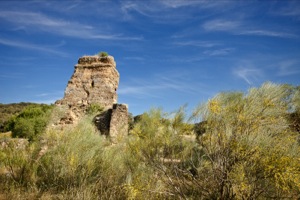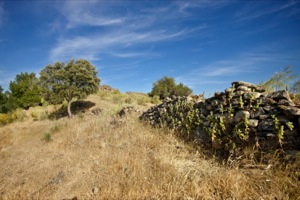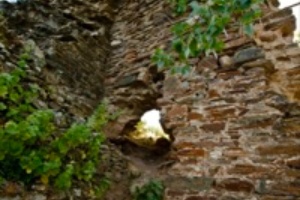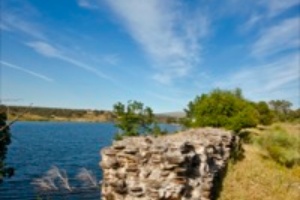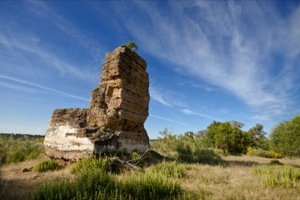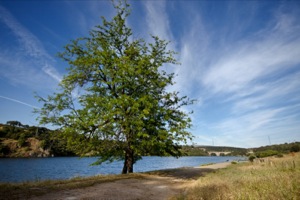Art and culture
Albalat archaeological site
The good state of preservation of this fortress has made it an indispensable element for studying the Islamic period in Extremadura.
- Explore
- Albalat archaeological site
The mark left by the Islamic period in Extremadura
Location and Contact:
- Contact person: Ayuntamiento de Romangordo
- Tel.:+34 927 57 65 81
- Email: info@romangordo.org
- Website address: romangordo.org/
-
The good state of preservation of this fortress has made it an indispensable element for studying the Islamic period in Extremadura.
Located in the village of Romangordo in Cáceres province, the archaeological site of Albalat is a fortification from the Muslim era set on a platform that dominates the left bank of the river Tagus. Declared an asset of cultural interest, this partially-fossilized architectural ensemble helps one understand the Islamic period in Extremadura.
Known since the 10th century by the name of Majadat al-Balat, in ancient times it was used to control one of the main points where the middle section of the Tagus could be passed. One of its most remarkable elements is the walls, along with the necropolis and the early medieval district outside the walls, where the only Arab baths to be discovered in Extremadura have been found, apart from the remains found in Mérida.
-
- Origin:
-
- 10th century
- Construction:
-
- Fortress
- Art period:
-
- Islamic
- Period in history:
-
- Various periods
- Various styles
- 10th century
- Official name :
-
- Property of Cultural Interest
Gallery:
More suggestions
-
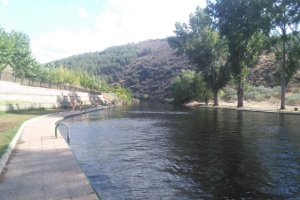
Descuernacabras Gorge
Garganta de Descuernacabras gorge, in the Cáceres municipality of Valdecañas del Tajo, boasts a magnificent natural swimming pool.
-
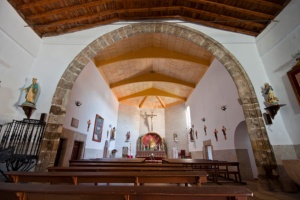
Parish Church of Santiago Apóstol
The Parish Church of Santiago Apóstol in Belvís de Monroy in Cáceres is the oldest religious building remaining in the town.
-
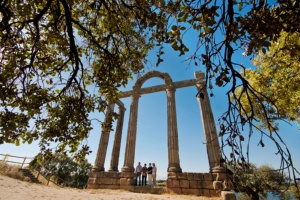
Roman ruins of Augustóbriga
This archaeological ensemble, situated in the municipality of Bohonal de Ibor, in the province of Cáceres, was moved stone by stone to prevent it from being covered by the water of Valdecañas reservoir.
-
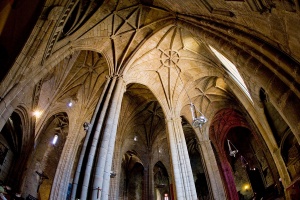
Franciscan Convent of Belvís de Monroy
The convent was built between 1505 and 1507 thanks to the benevolence of the bishop of Plasencia and the fact that three Franciscan monks needed to inhabit it.
-

Bridge over the river Almonte
This 15th-century construction straddles the river Almonte, in Jaraicejo
-
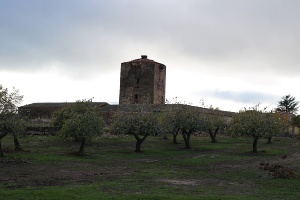
Castle of Almaraz
Declared a historical Spanish heritage site, the only original part of this castle to be preserved is the keep.
-
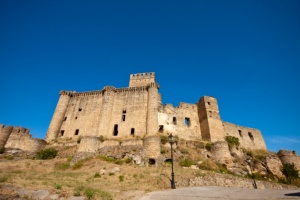
Belvís de Monroy Castle
Belvís de Monroy Castle in Cáceres, with its unusual style, has been declared a Spanish cultural heritage site.
-
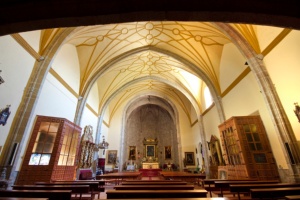
Church of San Pedro Ad Víncula
Its rose window and doors make this church very valuable and beautiful.
-
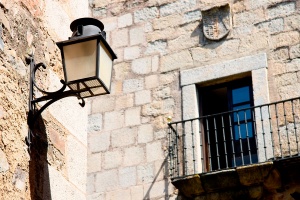
Serrejón
-

Toril

